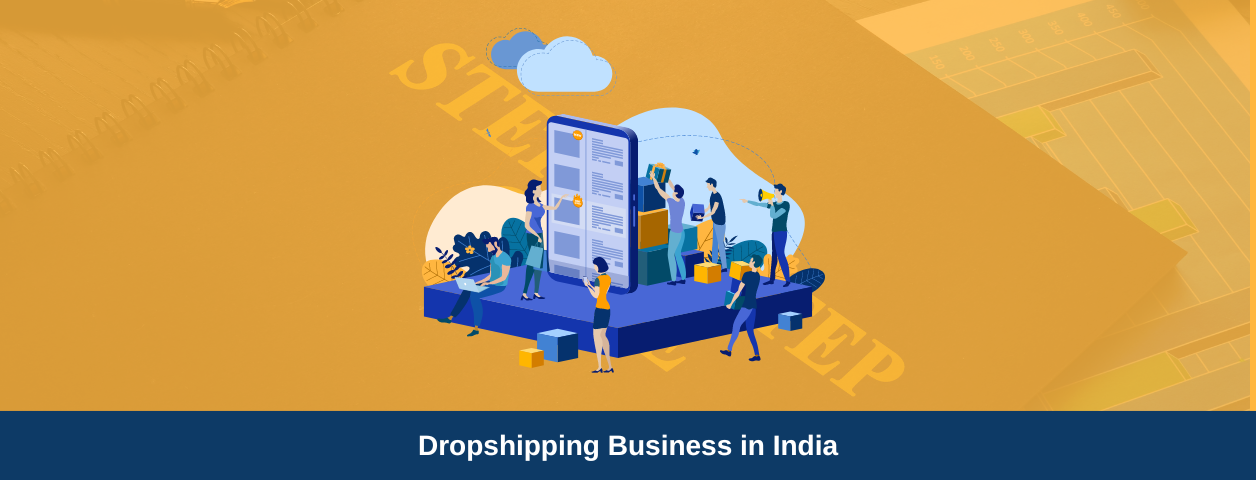RTO (Return to Origin) might seem like just another logistics or delivery issue, leading you to consider resolving it later. Actually, the return to origin issue is a silent killer in the eCommerce industry, particularly for the sellers who face it.
It not only eats into your profits but also drains time, energy, and customer trust. Every undelivered parcel results in double shipping costs, wasted packaging, and blocked inventory, and can sometimes frustrate a customer who never returns.
This kind of issue does not happen in rare instances. Online stores lose approximately one in three orders to RTOs, particularly when Cash on Delivery (COD) is involved. Even though the modern world has moved into digital money, Cash on Delivery orders still make up 60 to 70% of the total.
But if there is a problem, there is also a solution. By following the right strategies and proper steps in your eCommerce business, you can dramatically reduce the loss due to RTO and maintain a consistent profit margin growth.
This guide provides you with all the information, starting from what return to origin means, the impact of RTO in eCommerce and how to reduce RTO in eCommerce. Whether you run a small D2C label or a print on demand service, reducing RTO is key to scaling your business.
Key Takeaways:
- Return to Origin (RTO) means that the order couldn’t reach the customer and was sent back to the seller due to a delivery issue.
- RTO directly impacts profit through increased shipping costs and inventory blockages, and also affects customer experiences.
- Common causes may be incomplete information, late deliveries, product mismatches, and fake orders.
- Verifying customer details, encouraging prepaid payments, and choosing reliable couriers can significantly reduce RTO.
- Platforms like Qikink help eCommerce sellers to reduce RTO rates through order management, automated tracking, and seamless courier integrations.
Return to Origin (RTO) Meaning in Courier
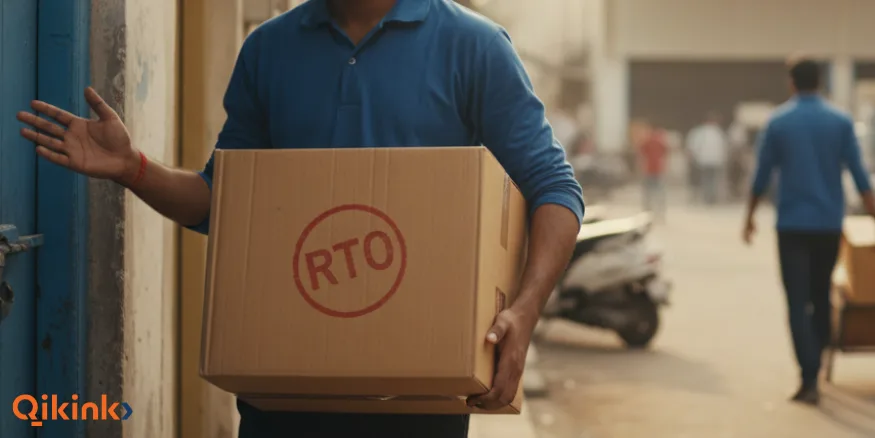
In eCommerce, Return to Origin means a shipped order that fails to reach the customer and is sent back to the seller’s original address or warehouse. It’s like your parcel took a U-turn, instead of being delivered successfully.
When a customer places an order online, your courier partner collects it from your warehouse and attempts to deliver it. If the customer is unavailable, rejects the order, or provides an incorrect address, the delivery will fail.
After a few failed attempts, the courier marks the parcel as ‘RTO’ and returns it to its starting point, which is the seller’s location or inventory. Even after investing in marketing, packaging, and shipping, the order returns without generating any revenue, doubling your cost and blocking your inventory.
What is RTO in eCommerce & How does it work?
RTO goes through a series of steps in the courier and fulfilment chain. Understanding this flow helps to pinpoint where issues typically arise and how to address them as a brand.
- Once a customer places an order, the product is packed and handed over to the courier partner for delivery.
- The parcel travels from your location or your warehouse to the customer’s local delivery hub.
- The courier agent tries to deliver the order. If the customer is unavailable, refuses the order, or has an unverified address, the delivery will not be completed.
- After a failed delivery, the courier marks the order as NDR (Non-Delivery Report). At this stage, the seller can update or confirm the address to reattempt delivery.
- If the seller doesn’t respond to the NDR in time or the delivery fails again, the parcel is marked as RTO.
- The seller will now receive the order back to their location. Once received, the seller can check the parcel for damage, verify the packaging, and process it for resale or restocking.
In short, RTO is a cycle of failed deliveries and returns. Each time this happens, the seller must hold the double charges, blocked stock in inventory, and perform other operations.
What is the RTO Rate for eCommerce?
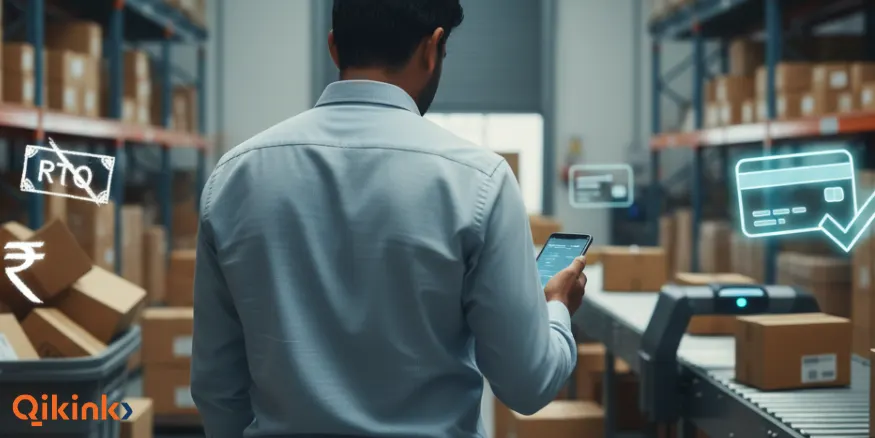
- In India, Cash on Delivery (COD) orders have the highest RTO rates. According to a recent logistics report, nearly 26% of COD shipments are returned as RTOs.
- In contrast, prepaid orders experience far lower RTOs, accounting for less than 2%.
- Typical RTO rates in India range from 20 to 30%, depending on region, product type, courier reliability, and customer behaviour.
Understanding the average RTO rates is essential, as it helps us understand why these returns happen in the first place.
eCommerce Conversion Optimization for Websites: Double Your Sales

What are the Reasons for Return To Origin?
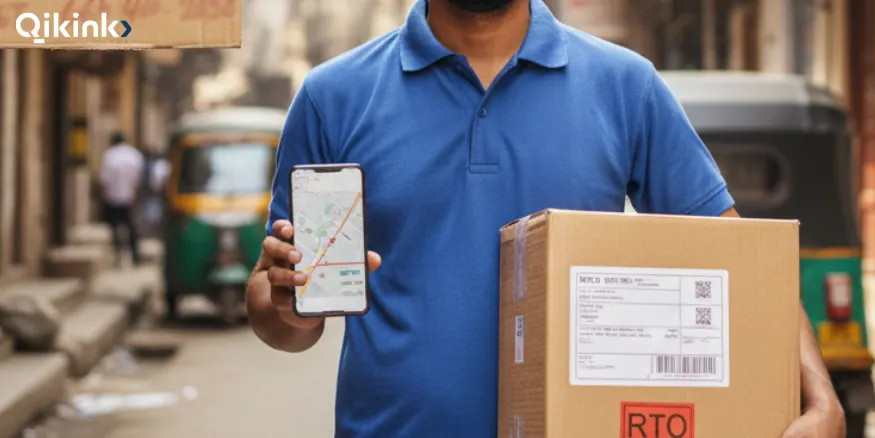
Several reasons can lead to the RTO in eCommerce. Let us look at the primary reasons that can cause Return to Origin for any eCommerce business.
1. Incorrect or Incomplete Delivery Address:
One of the biggest causes of RTO is wrong address details provided by the customer. Missing apartment or door numbers, incorrect pin codes, or misspelt street names can make it challenging to find the proper address to deliver the order.
2. Invalid Contact Information:
If the phone number or email address is wrong or unreachable, the delivery agent cannot communicate with the customer to complete the delivery.
3. Customer Unavailability:
Often, the recipient is physically absent or unreachable when the courier arrives. After multiple attempts to deliver the order, if no in-charge person is available to collect it, the order must be moved to RTO.
4. Change of Mind:
This issue often occurs with Cash on Delivery orders. If the customer finds a better offer or faster delivery for the same order, they may change their mind and cancel the order at their doorstep.
Sometimes, customers refuse orders due to last-minute reconsiderations, ordering duplicate products from other sellers, or dissatisfaction with packaging or product quality as perceived from delivery conditions.
5. Fraudulent Orders:
Some orders are deliberately placed with incorrect payment or contact information. Misuse of credit/debit cards by fraudsters and scammers can lead to fake COD orders, resulting in automatic RTO and financial loss for the seller.
Additionally, customers may purposefully place orders without intending to accept delivery. These kinds of fake or scam orders often result in RTO.
6. Wrong or Damaged Product:
On rare occasions, the delivered product may fall short of expectations. Because of the wrong size, colour, quality or damage, the recipient might be disappointed and cancel the order, which could be moved to RTO.
Clear product descriptions and images can help reduce this issue, but misalignment can still occur, which will frustrate the customer.
7. Delivery Partner Issues:
Sometimes, the courier partner may mark an order as undelivered due to miscommunication with the customer or operational errors, even when the customer is available. These fake delivery attempts are severe enough to be addressed to prevent the easy misleading of RTO.
8. Event or Time-Sensitive Delivery:
If the order was meant for a specific event or date and arrives late due to unstatable reasons, the customer might cancel it. Seasonal products and festival gifts are often rejected by the people, mainly because of this reason.
These types of issues mainly occur on COD orders, where the customer might not have cash in hand, or the recipient may deliberately reject the order with the intention of damaging the seller’s brand name.
Each of these reasons contributes to delayed revenue, highlighting why reducing RTO requires targeted strategies at multiple stages of your eCommerce operations. By identifying these causes, sellers can develop solutions to reduce RTO, improve delivery success, and safeguard their revenue.
How does RTO Affect Online Businesses?

Return to Origin doesn’t just mean a failed delivery; it has a ripple effect on various parts of your eCommerce operation, deeply impacting your business’s profitability and growth potential. When running a business, one has to bear all the losses, but not the additional charges because of RTO.
Let’s see how RTO affects online businesses:
- Double Shipping Costs: For every RTO order, you pay costs for both shipping the product to the customer and returning it to your warehouse, which significantly increases logistics expenses.
- Blocked Inventory: Products in RTO status remain held up and unavailable for sale until they are received, inspected, and restocked. This reduces stock turnover and ties up further working capital.
- Additional Operational Costs: Managing RTO orders separately involves extra packaging, quality checks, and labour, which add up to your operational expenses.
- Increased Risk of Product Damage: Items that hold longer in the warehouse or storage or are handled multiple times in transit are more prone to damage, which can make them unsellable.
- Poor Customer Experience: Frequent RTO incidents can dissatisfy customers, damage your brand reputation, and negatively impact customer loyalty and lifetime value.
- Delayed Cash Flow: For COD orders, RTO delays payments, which affects your cash flow and makes it harder to reinvest in business growth.
Even a single RTO for your order can significantly impact your operations and finances. That’s why reducing RTO is key to maintaining profit margins and ensuring smooth eCommerce growth.

How to Reduce RTO in eCommerce?

Now that we have learnt what Return to Origin is and the reasons it affects your business. All of them lead us to a question: How to reduce RTO in eCommerce? Well, the good news is that with the right strategies, you can reduce your RTO, save money, and improve customer satisfaction.
It demands intelligent planning, operational efficiency and product or customer clarity. Here’s how you can practically minimise RTO in your online business:
1. Verification of Customer Details
Incorrect addresses, missing contact numbers, or unverified COD orders are the top reasons for RTO. Automate address verification, send reminders to confirm details, and ensure your courier has accurate information before dispatch.
2. Encourage Prepaid Payments with Incentives
Most prepaid orders contribute to a lower RTO rate. Consider offering discounts or cashback for advance payments. Clearly highlight these offers on your checkout page to encourage customers to make prepaid purchases.
According to recent e-commerce reports, COD orders have the highest RTO rate, reaching up to 26% in India, compared to less than 2% for prepaid orders. Consider offering multiple payment options, such as UPI, wallets, and credit/debit cards, along with small incentives for prepaid payments to reduce returns.
3. Make the Checkout Process Simple
A complicated or lengthy checkout page often results in the order being stopped in half. Simplify your checkout with clear, easy instructions. Include address verification tools to ensure accuracy, and use prompts for landmarks, PIN codes, and phone numbers. Validate customer input before confirming the order.
There are many easy checkout tools, like Razorpay, with seamless, multi-mode payments during the checkout process, which help businesses reduce failed transactions and cart abandonment, and easily expand their stores to access more customers because of a fast-moving payment page.
4. Provide Accurate Product Information
Misunderstood product expectations are a major reason for returns. Ensure your product descriptions and customer reviews are detailed and accurate, and incorporate high-quality images to enhance your product pages.
Use size guides for apparel and transparent specifications for electronics. Accurate info reduces dissatisfaction and returns, especially when customers know exactly what they are ordering.
5. Use Reliable and Efficient Courier Partners
Partner only with courier services that provide timely deliveries and professionalism. Reliable couriers improve your delivery success rate and reduce failed attempts. When customers receive their orders on time, the chances of rejection drop sharply.
6. Enable Real-Time Order Tracking
Customers like to know when their orders will arrive. Offering real-time tracking and notifications not only builds trust but also reduces refusals caused by missed deliveries or uncertainty. Consider partnering with couriers who offer this system to your customers, which can encourage more repeat purchases.
7. Implement Smart Delivery
By sending automated SMS or WhatsApp messages, you can confirm both delivery time and customer availability, which offers a double cushion in this business. Also, provide flexibility for rescheduling or changing delivery addresses if the customer is unavailable during the initial delivery attempt. This proactive communication is necessary to avoid unnecessary RTOs.
8. Improve Packaging to Minimise Damage
Always invest in high-quality packaging, especially for fragile or high-value items. Well-packaged products most of the time arrive in good condition, which builds trust and minimises returns and refunds due to damage. Including clear handling instructions with the product can also help reduce mishandling during delivery.
9. Simplify Returns, Cancellations, and Exchanges
Provide smooth, transparent options for exchanges rather than direct refunds. Customers are more comfortable exchanging a product rather than returning it. Clearly communicate the exchange process while ensuring swift reverse logistics.
Sometimes, customers are the reasons for the RTO because they find it difficult to cancel or return an order. But creating an easy-to-use return policy on your portal encourages cancellations rather than rejecting or returning the order.
10. Distribute Inventory
Having warehouses or eCommerce fulfilment centres closer to your customers reduces delivery time and improves success rates. Rapidly refilling returned products with available inventory to make them resellable.
11. Detect and Block Fraudulent Orders
Implement fraud prevention checks and OTP verifications for high-priced orders. Track your RTO database by analysing PIN codes, customer demographics, and order types. Monitor repeated RTO patterns to identify and block risky customers. Use this data to continuously refine your logistics and marketing strategies.
With these practical strategies, you can effectively reduce RTO in eCommerce. The key is combining customer trust, efficient logistics, and modern technology to create a seamless shopping experience with on-time delivery.
Tools and Solutions to Reduce RTO in eCommerce

Using the right tools is critical to managing and reducing Return to Origin rates effectively. These tools leverage AI, automation, and data analytics to help sellers verify orders, engage customers, and streamline logistics.
Here are some examples of essential RTO reduction tools:
- Zoko Commerce Automation Tool: Zoko is a powerful WhatsApp-based eCommerce tool designed to help brands manage sales, communication, and fulfilment from a single dashboard. It integrates with Shopify and other platforms to automate confirmation, payment reminders, and enable order tracking inside WhatsApp. With Zoko, you can convert COD orders to prepaid using instant payment links and providing special offers.
- Shiprocket Engage 360: Shiprocket’s Engage 360 focuses primarily on post-order customer engagement and order confirmation automation. It helps by sending automated WhatsApp messages for COD confirmation, address verification, and delivery updates. By combining checkout optimisation tools like Shiprocket Checkout with Zoko’s conversational automation, sellers can create an interactive buying portal that leads to higher delivery success and lower return rates.
- GoKwik: GoKwik also focuses on optimising checkout flow and assists with address validation and customer verification calls, which helps to reduce RTO significantly.
- Non-Delivery Report Automation Tools: When a courier fails to deliver an order, an NDR notification is generated. Tools like Eshopbox RTO Suite automate this process, enabling sellers to receive instant alerts to update or reattempt deliveries before they become an RTO.
- AI-powered Risk Profiling and Fraud Detection Tools: Many AI tools are available to analyse order patterns and customer behaviour, indicating high-risk or fraudulent orders before shipping.
- Real-Time Tracking Dashboards: Specialised order tracking tools give visibility across all shipments, whether delivered, delayed, in transit or returned. This transparency helps identify courier inefficiencies and reduces unexpected returns.
- Integrated Fulfilment Platforms: Instead of juggling multiple dashboards for inventory, shipping, and returns, using an integrated fulfilment platform, Qikink simplifies the process. It keeps your operations organised and ensures faster responses to RTO alerts.
How Qikink Manages RTO?
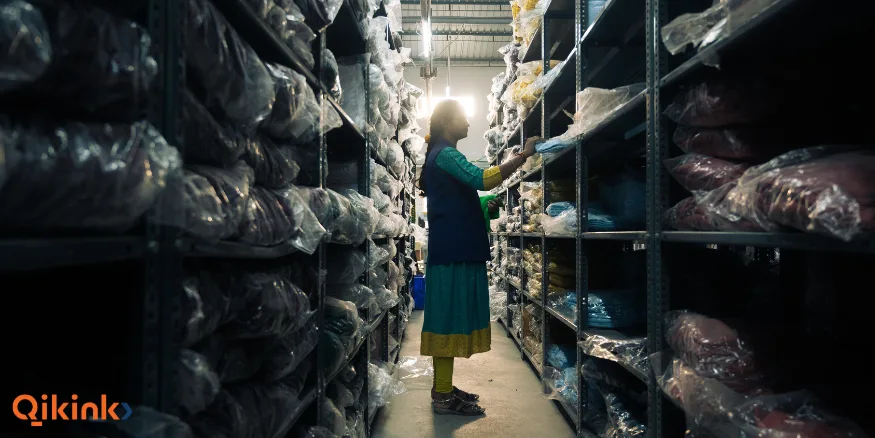
Reducing RTO in eCommerce is not just about preventing returns; it’s about building a smarter fulfilment process that saves cost, time, and customer trust. That’s exactly where Qikink shines brighter.
They offer a complete print on demand and fulfilment platform designed for modern online sellers and D2C brands in India. Qikink stands out by providing an integrated, seller-friendly ecosystem focused on reducing RTO and improving profitability:
- Qikink does not charge sellers for RTO orders, removing a major financial risk, especially with Cash on Delivery shipments. This encourages sellers to offer COD without fear of incurring additional losses on undelivered orders.
- Qikink’s platform validates phone numbers (accepting only proper 10 digits), customer addresses and allows both sellers and buyers to track orders in real-time, reducing failed delivery attempts.
- Returned items are managed, stored and catalogued for up to 100 days, allowing sellers to resell or replace products.
- With premium and eco-friendly packaging, and consistent fast delivery (2-3 business days), Qikink enhances customer experience, reducing rejection and increasing repeat sales.
- Qikink supports sellers with real-time support and detailed RTO data analytics to identify high-risk areas, optimise logistics, and refine marketing efforts.
In short, Qikink helps eCommerce sellers minimise RTO losses, automate fulfilment, and scale confidently, without worrying about logistics complexity. If you’re starting a print on demand brand, a dropshipping business or running a fast-growing D2C store, Qikink’s all-in-one platform makes your fulfilment smarter, faster, and more reliable.

Final Thoughts
Managing the returns to the origin is a huge task; it determines the future profit and revenue, too. By reducing failed deliveries and returns, you protect your profit margins, avoid unnecessary expenses, and free up valuable inventory.
A business providing excellent delivery and easy returns policies builds customer trust and enhances its reputation as a loyal brand. Happy customers not only make repeat purchases but also recommend your business to others, which plays a crucial role in today’s competitive market landscape.
Prioritising smooth returns management reflects your brand’s commitment to excellent customer experience and reliable service. It becomes your brand’s reputation and long-term profitability.
Platforms like Qikink empower sellers with all-in-one solutions, helping to reduce losses from returns and also improving operational efficiency. Sign up with Qikink today, where they support both new and established sellers in scaling confidently without logistics hassles.
In conclusion, an innovative, proactive approach to handling returns is no longer optional but a primary business strategy. Combine the right techniques, tools, and partners to turn returns into opportunities for trust-building and growth.
Read More
Frequently Asked Questions
How to Reduce RTO in the eCommerce Store?
To reduce RTO, focus on accurate address verification, clear product descriptions, and customer communication. Offer prepaid payment incentives, partner with reliable courier services, and enable real-time tracking for customers. Proactive delivery confirmations through SMS or WhatsApp can also help avoid failed deliveries and reduce returns.
What is an RTO Shipper Request?
The seller or courier partner initiates the return process by raising an RTO Shipper Request for an undelivered order to be returned to its origin location. This happens when delivery attempts fail or the customer refuses the package. Once approved, the courier returns the parcel to the seller’s warehouse or fulfilment centre.
What are the Simple Strategies for Beginners to try for RTO?
If you’re just starting, begin with a few simple steps:
- Double-check customer details before dispatch.
- Use automated confirmation messages for COD orders.
- Offer prepaid discounts or incentives.
- Partner with trusted couriers like Qikink for smooth fulfilment.
- Keep your packaging durable and professional to build customer confidence.
What are the Costs associated with an RTO order?
Understanding how to reduce RTO in e-commerce is essential for being profitable. These RTO-related expenses might hurt your company’s bottom line:
- Shipping costs: Returning things costs money. If your company provides free shipping, you include the cost of shipping in the overall price of the goods. Nevertheless, if a buyer returns the product, you will be responsible for the reverse shipping costs.
- Expenses of repackaging: Items are shipped in customised boxes with packing slips and postage. When consumers return such packages, they must be unpacked and restocked. Workers must then repackage them before sending them to a new customer.
- Damaged products: When customers return items, they may pass through several warehouses and be consolidated with other items for delivery. During this procedure, certain items can get damaged.
- Handling and operational fees: If a product lies on a shelf, it is not generating revenue for your organisation. And if it eventually ships only to be returned, your company will lose money.
- Expiration: Certain items might not last indefinitely. Some are only valuable at particular seasons. Shipping a product that goes missing or is found after its expiration date will result in the product being deemed unsellable.
What are the primary reasons for online retailers to initiate "Return to Origin (RTO)" for their products?
Online retailers’ most common reasons for initiating “Return to Origin (RTO)” include incorrect or invalid delivery addresses, invalid user information, customer unavailability, fraudulent orders, and client intention.
What financial implications does "Return to Origin (RTO)" have on online businesses, and how do they mitigate these costs?
“Return to Origin (RTO)” can have financial implications for online businesses, including lost income, client acquisition fees, and logistics expenses. To mitigate these costs, companies can improve delivery information accuracy, provide quality products, and use reliable courier services.











